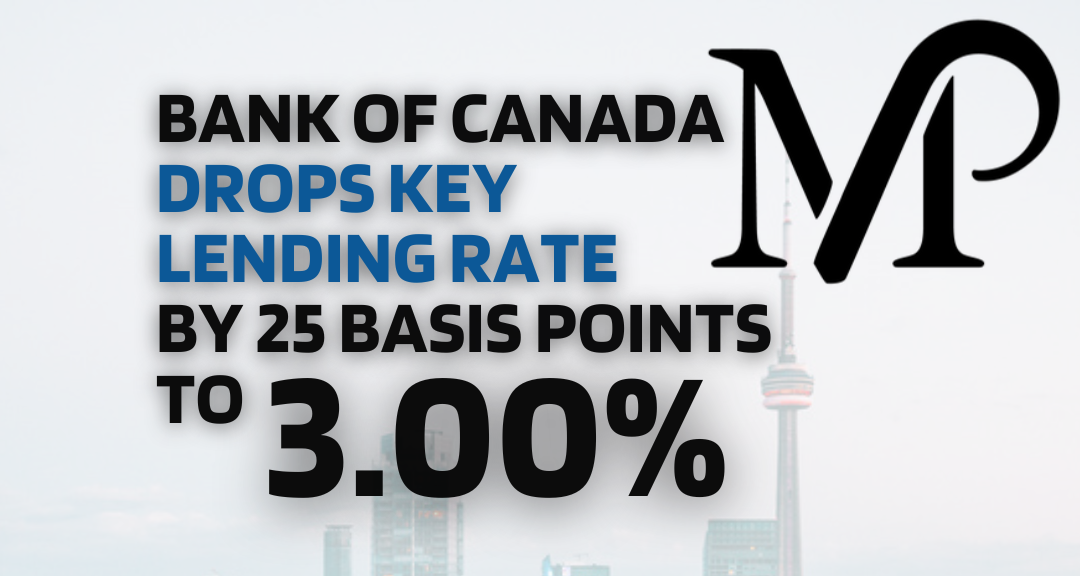Jan 29th, 2025: The Bank of Canada (BoC) has officially lowered its policy rate by 25 basis points, bringing it down to 3.0%. This widely expected move comes amid ongoing economic uncertainty and growing concerns over potential U.S. trade tariffs. But what does this rate cut mean for Canadian homebuyers, homeowners, and the broader housing market?
Why Did the Bank of Canada Cut Rates?
The decision to lower interest rates is primarily driven by a combination of factors, including:
- Slower Economic Growth: GDP growth projections have been revised downward due to reduced immigration targets and lagging business investment.
- Rising Unemployment: Canada’s job market remains soft, with an unemployment rate of 6.7% as of December 2024.
- Global Economic Uncertainty: Ongoing geopolitical risks, trade tariff threats, and fluctuating oil prices have added pressure on the Canadian economy.
- Inflation Stabilization: CPI inflation has been hovering around the 2% target, giving the Bank of Canada room to ease monetary policy without immediate risks of overheating.
Impact on Homebuyers and Homeowners
For Canadians looking to purchase a home or renew their mortgage, this rate cut could provide some much-needed relief.
- Lower Mortgage Rates: Variable-rate mortgages and Home Equity Lines of Credit (HELOCs) will see immediate reductions in interest costs, making borrowing more affordable.
- Increased Affordability: With lower borrowing costs, prospective homebuyers may find it easier to qualify for mortgages and enter the housing market.
- Stimulated Housing Market: A lower policy rate often leads to greater demand for housing, which could drive home prices higher in the coming months.
- Refinancing Opportunities: Homeowners with existing mortgages may benefit from refinancing at a lower rate, potentially reducing their monthly payments.
Challenges and Risks to Watch
While lower interest rates offer benefits, there are also some potential downsides to consider:
- Impact on the Canadian Dollar: The rate cut has contributed to a weaker Canadian dollar, which could make imported goods more expensive and add inflationary pressure.
- Potential for Future Economic Struggles: If trade tariffs from the U.S. materialize, Canada’s economy could face additional headwinds, impacting job security and overall financial stability.
- Risk of Overheating in Housing Markets: If rates continue to decline, there is a possibility of heightened demand leading to bidding wars and further affordability challenges.
What’s Next?
The BoC has signaled that additional rate cuts could be on the horizon, depending on economic conditions. Experts predict that rates may drop to 2.5% by spring, which could further strengthen the housing market. However, the central bank remains cautious about the long-term implications of these cuts, especially if global trade conflicts escalate.
Final Thoughts
The Bank of Canada’s rate cut is a significant move that could provide financial relief for many Canadians, particularly homebuyers and mortgage holders. While the lower rates create opportunities, it’s important to stay informed and consider both the benefits and risks when making financial decisions.
If you’re considering purchasing a home, refinancing your mortgage, or exploring your options, now is a great time to speak with one of our mortgage professionals to understand how these changes impact your financial situation.


